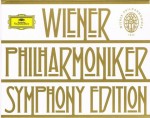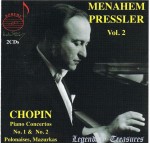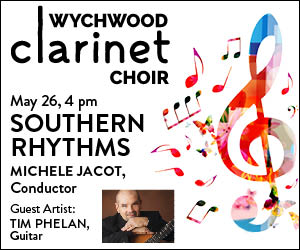Although Gramophone Magazine recently determined that Amsterdam’s Concertgebouw Orchestra was the finest orchestra in the world, other surveys have given that honour to the more highly esteemed Vienna Philharmonic. Unlike the Concertgebouw and other orchestras, the Vienna Philharmonic does not engage a permanent conductor. It draws its members from the orchestra of the Vienna State Opera and its home is Vienna’s illustrious Musikverein where most of its recordings are made. TV viewers around the world know the Musikverein thanks to the annual telecast of the Philharmonic’s New Year’s Day concert.
 The Vienna Philharmonic Orchestra is a democratic, self-governing body founded in 1842 by composer Otto Nicolai (The Merry Wives of Windsor) and since then the greatest conductors of their time have stood before them, from Hans Richter, Gustav Mahler, Felix Weingartner and Wilhelm Furtwangler to Arturo Toscanini, Bruno Walter, Clemens Krauss and George Szell. The list goes on to include the maestros who are heard in the Wiener Philharmoniker Symphony Edition from Deutsche Grammophon (4790718, 50 CDs) containing 95 symphonies by 13 composers.
The Vienna Philharmonic Orchestra is a democratic, self-governing body founded in 1842 by composer Otto Nicolai (The Merry Wives of Windsor) and since then the greatest conductors of their time have stood before them, from Hans Richter, Gustav Mahler, Felix Weingartner and Wilhelm Furtwangler to Arturo Toscanini, Bruno Walter, Clemens Krauss and George Szell. The list goes on to include the maestros who are heard in the Wiener Philharmoniker Symphony Edition from Deutsche Grammophon (4790718, 50 CDs) containing 95 symphonies by 13 composers.
In June 1984, James Levine recorded Mozart symphonies 28, 29 and 30, initiating what would become a complete cycle. A year later, in June 1985, he set down six more, with further sessions in December 1986, December 1987 and June 1989, with the final two sessions in February and December 1990. Levine was George Szell’s apprentice in Cleveland in 1964 and 1965 and assistant conductor until 1970. Levine absorbed Szell’s characteristically crisp articulation and clarity of the melodic line, qualities that serve Mozart well. Unavailable for many years, the return to active duty of this complete cycle, occupying the first 11 discs, is more than welcome.
Discs 12 and 13 are devoted to Haydn’s symphonies 88 to 92 and 105 conducted by Karl Böhm whose traditional Kapellmeister elegance will charm those who look for such music making (1972/73 recordings). Discs 14 to 18 find the nine Beethoven symphonies divided up between Bernstein (1, 3 and 9); Abbado (2 and 4); Kleiber (5 and 7) and Böhm (6 and 8); judiciously allocated, as demonstrated by the selection of Böhm’s perfect realization of the “Pastoral” from 1971.
Discs 19 and 20 contain Schubert’s 3, 5, 8 and 9 with Kleiber, Böhm and Gardiner while disc 21 has Gardiner again in Mendelssohn’s 4 and 5. Discs 22 and 23 have Bernstein’s final recorded interpretations of Schumann from 1984/85 revealing an understanding and commitment beyond him ten years earlier in New York. Discs 24 to 26 find the Brahms symphonies allocated to Bernstein (1, 2), Giulini (3) and Kleiber (4). No arguments here. Discs 27 to 32 have six of Bruckner’s nine, with three given to Abbado (1, 4 and 5), Karajan’s swan song 7 (1989) and 8 (1988), with the 9th under Giulini. Discs 33 to 35 have Karajan’s arguably finest performances of Tchaikovsky’s 4, 5 and 6, all from 1984.
Discs 36 and 37 offer only four of Dvořak’s nine: unexpectedly by Myung-Whun Chung (6, 7) and Maazel (8, 9). Discs 38 to 47 offer an almost complete Mahler cycle: Abbado (2, 3, 4 and 9), Bernstein (5, 8 and the Adagio from 10) and Boulez gets the 6th.
Discs 48 to 50 are given to Leonard Bernstein conducting astounding performances of Sibelius 1, 2, 5 and 7 and finally the 6th and 9th by Shostakovich. Both Sibelius and Shostakovich receive performances of a lifetime, no ifs, ands or buts. A supercharged, over-the-top coda to this exemplary, ridiculously inexpensive collection.
 We know Menahem Pressler primarily as the pianist of the Beaux Arts Trio, the group that he founded in 1955 which soon became one of the most respected chamber groups in history. He also performed and recorded outside the trio as a soloist and in concerted works. The trio disbanded in 2008 but Pressler continues to perform as soloist and accompanist. DOREMI has issued a set of CDs featuring Pressler’s Chopin recorded c.1960 (DHR-7989/90, 2 stereo CDs). Heard are three works with orchestra, the two concertos and the Andante Spianato and Grande Polonaise Brilliante, Op.22 together with three polonaises and five mazurkas. Pressler was evidently in top form on each occasion and we witness his Chopin to be expressive and eloquent with touches of refreshing originality.
We know Menahem Pressler primarily as the pianist of the Beaux Arts Trio, the group that he founded in 1955 which soon became one of the most respected chamber groups in history. He also performed and recorded outside the trio as a soloist and in concerted works. The trio disbanded in 2008 but Pressler continues to perform as soloist and accompanist. DOREMI has issued a set of CDs featuring Pressler’s Chopin recorded c.1960 (DHR-7989/90, 2 stereo CDs). Heard are three works with orchestra, the two concertos and the Andante Spianato and Grande Polonaise Brilliante, Op.22 together with three polonaises and five mazurkas. Pressler was evidently in top form on each occasion and we witness his Chopin to be expressive and eloquent with touches of refreshing originality.
The sound is pleasantly warm and quite convincing due to the tube-based electronics used for the meticulous transfers. I must comment that, as in the original LPs, the sound in the three concerted works (all with the Vienna State Opera Orchestra) tends to favour the piano. This is volume two in a series and I am informed that volumes three and four contain Pressler’s entire Mozart, Prokofiev and Shostakovich recordings including concertos.
 When Classical Barbra was issued in 1976 a few “classical music lovers” expressed righteousness indignation at the thought of Barbra Streisand even attempting to perform “their” repertoire. Claus Ogerman made the arrangements and conducted the Columbia Symphony Orchestra. Ten tracks were issued on the LP and then on a CD which has never left the catalogue. It is now exactly 40 years since these songs were recorded and Columbia has taken the opportunity to remaster the ten originals and add two unreleased songs (Sony 92255-2).
When Classical Barbra was issued in 1976 a few “classical music lovers” expressed righteousness indignation at the thought of Barbra Streisand even attempting to perform “their” repertoire. Claus Ogerman made the arrangements and conducted the Columbia Symphony Orchestra. Ten tracks were issued on the LP and then on a CD which has never left the catalogue. It is now exactly 40 years since these songs were recorded and Columbia has taken the opportunity to remaster the ten originals and add two unreleased songs (Sony 92255-2).
No one is claiming that any one of these is the best version but Streisand fans will enjoy 40 minutes of hearing her distinctive voice in unusual and attractive, evocative repertoire including chansons of Debussy, Cantaloube and Fauré and lieder of Wolf, Schumann and Schubert among other offerings.



